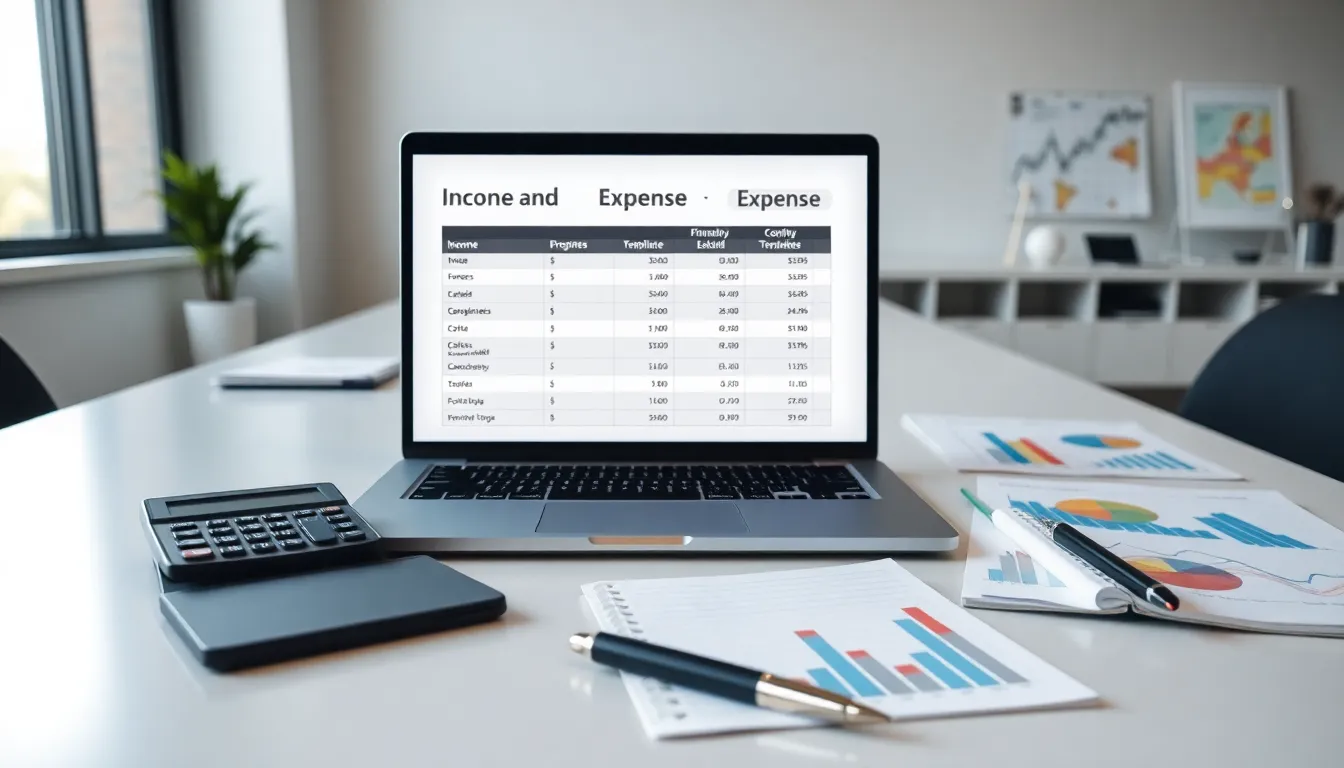Table of Contents
ToggleHave you ever checked your bank balance and wondered, “Where did all my money go?” Well, worry no more. An income and expense template is like having a financial GPS that guides you through the confusing terrain of your finances. Balancing income and expenses may sound dull, but with the right template, it can become your newfound hobby, who knew budgeting could be so satisfying? Let’s jump into the world of income and expense management, transforming this tedious task into an empowering experience.
What Is An Income And Expense Template?

An income and expense template is a tool that helps individuals and businesses track financial inflows and outflows. By clearly categorizing sources of income, like salaries, bonuses, or side hustle earnings, alongside expenses such as rent, groceries, and fun nights out, this template simplifies budget management. Basically, it acts like a personal financial assistant, keeping everything organized and easy to understand. You can find these templates in various formats such as spreadsheets, apps, or even simple printable documents. The beauty of having a structured version means crunching numbers and assessing financial health becomes a breeze.
Benefits Of Using An Income And Expense Template
Using an income and expense template offers numerous advantages:
- Clarity: One of the biggest benefits is gaining a clear view of your financial situation. It helps individuals see exactly where their money comes from and where it goes, making it easier to identify areas for improvement.
- Accountability: When you have a visual representation of your finances, it holds you accountable. You’re less likely to splurge on that extra latte when you know you’ll have to account for it.
- Goal Setting: Want to save for a vacation? Or perhaps you’re aiming to pay off debt? With an income and expense template, tracking your progress becomes straightforward. It encourages setting realistic financial goals and keeps you motivated.
- Avoiding Overspending: Mindlessly spending can lead to regret. A solid template alerts users to their spending habits, helping avoid potential pitfalls. It’s like having a financial lifeguard watching over your budget, reminding you when you’re about to jump into dangerous waters.
Key Components Of An Income And Expense Template
A well-structured income and expense template typically includes the following key components:
- Income Section: This is where all your income sources are detailed. Break them down to provide a clear picture of earnings.
- Expense Categories: Divide your expenses into categories such as fixed (rent, utilities) and variable (food, entertainment). This segmentation makes it easier to analyze spending patterns.
- Total Income and Expenses: Having a section that sums up total income and expenses helps in assessing overall financial health quickly. Users can see if they’re living within their means or overspending.
- Balance Calculation: This component calculates the difference between total income and expenses, alerting users to their financial position, positive or negative.
- Notes or Comments Section: An area for additional remarks can help track unusual spending, upcoming expenses, or remind individuals of financial milestones.
How To Create Your Own Income And Expense Template
Creating an income and expense template is a straightforward process:
- Select Your Format: Choose a format that works for you. Spreadsheets are popular due to their flexibility. You can use software like Microsoft Excel or Google Sheets.
- Set Categories: Begin by outlining categories for both income and expenses. Tailor these to your needs. Perhaps you have a pet expense category if you own a furry friend.
- Create a User-Friendly Layout: Design your template so it’s easy to read and navigate. A simple and clean layout tends to encourage regular updates.
- Add Formulas: If using a spreadsheet, add formulas to automate calculations for total income, total expenses, and balance. This minimizes manual work and risks of error.
- Regularly Update: It’s vital to keep your template updated. Time set aside weekly can help ensure accuracy and prompt spotting of any financial trends.
Tips For Effective Budget Management
Here are some practical tips for managing your budget effectively using your income and expense template:
- Stay Consistent: Regularly update your template. Daily entries keep the data fresh, ensuring accuracy.
- Review Monthly: Take time each month to review your expenses. This practice allows for adjustments based on spending trends or shifts in financial circumstances.
- Use Alerts and Reminders: Many applications allow setting reminders for bills or spending limits. Use these tools to avoid surprises.
- Be Realistic: Set budgets that you can realistically stick to. Unrealistic budgeting often leads to disappointment and can derail budgeting efforts.
Common Mistakes To Avoid When Using A Template
Even with the best intentions, pitfalls can occur when using an income and expense template:
- Neglecting Updates: An outdated template can lead to incorrect financial assessments. Regular updates are key.
- Forgetting to Account for Irregular Expenses: Many forget irregular expenses like car repairs or holidays. Incorporating these into the budgeting process prevents financial shocks.
- Ignoring Personal Financial Goals: Those using a template should keep their goals front and center. A budget without financial aspirations can feel meaningless and lead to neglect.
- Not Analyzing Trends: Simply recording data without looking at it can be counterproductive. Regularly analyzing trends helps in making informed financial decisions.







